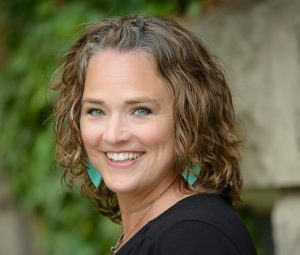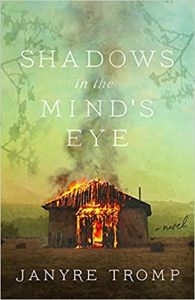How Faith Impacts and Inspires Writing
 The tale of putting Shadows in the Mind’s Eye on paper was not at all what I expected and I’m not sure I would voluntarily go back and do it again.
The tale of putting Shadows in the Mind’s Eye on paper was not at all what I expected and I’m not sure I would voluntarily go back and do it again.
There have been long stretches of my life where I was all too familiar with debilitating fear. I still have occasional flashes from my childhood, the rush of adrenaline causing my pulse to pound and hands to shake. I was terrified to have kids, to be the one responsible for their physical/mental/emotional wellbeing. The last thing I wanted was for them to have the same problems I had. But, as one of my characters Dovie May says, “The best place for miracles is where we don’t fully believe, where our believing has run out.”
My husband, Chris, and his family, as well as my good friend, Sarah De Mey, and my mom (who worked hard to get help), have been amazing role models for me as I navigate what it looks like to raise emotionally healthy kids. And my family and I were doing quite well.
Until in about eighteen month’s time, I had a major medical issue requiring surgery, my daughter tore her ACL, my son experienced recurring pneumonia, my husband had spinal surgery, the docs thought I had lupus, and then to cap it off, my daughter became increasingly ill. After months of visiting doctors to find out why my twelve-year-old daughter was experiencing increasing abdominal pain, she collapsed at school. What followed was a living nightmare. Doctors found her abdominal cavity full of an infection that quickly went septic. That was the first time we almost lost her. She was hospitalized seven times over a few months’ time and the doctors had no idea what caused her illness.
Months later, she’d lost more than forty pounds, and both she and I were wracked with nightmares, an inability to drive anywhere near the hospital, or be in a room with needles. To this day, I can’t smell rubbing alcohol without my body responding with panic.
On paper she should not have survived, and I can’t describe the immense fear that comes from the Pediatric ICU or a parade of doctors. My girl is doing great now, and she is one of the toughest kids I know. But boy does she have a soft heart for other kids who are suffering, and I can fully understand why someone might struggle with faith in a loving, all-powerful God.
The problem of pain is one that even the best and brightest theologians and thinkers don’t have a perfect answer for. There are pat answers—God uses hard things to make us better or God walks with us through our pain. But when I was in the hospital, totally overwhelmed and crying in the bathroom so my daughter wouldn’t hear me, the easy answers didn’t help. And so I (and my characters) often sit with C. S. Lewis saying, “I never knew grief felt so much like fear.”
Fear is the great consumer. In my book, the hero, Sam, comes home from WWII with what we’d now call PTSD. He’s afraid he’s going crazy and that he can’t protect his family. His wife, Charlotte Anne, is afraid she won’t ever be able to cope, and that the Sam she married is lost forever. And when they (or we) focus on fear, there are no solutions, no ways to move forward because they cannot solve fear on their own.
The fact is that we aren’t trustworthy enough or strong enough to fix it.
And so what do we do?
In the story, Sam says, “If you pop in the middle of the story, you might just mistake the hero for a failure or worse, a monster. But it’s the scrabbling out of trouble and finding the truth deep inside him that transforms that character into a hero of light and goodness.” In essence, “Remember that it ain’t over until it’s over.” I’m a huge proponent of looking for and celebrating the beautiful even when it isn’t pretty. Gratitude isn’t a pretty bandage to slap on a hemorrhaging wound. It is a way to shift your attention while the master healer does his work.
Annie and Sam find their way to gratitude—for simple joys of a birthday Karo nut pie, collard greens, the sunrise, and mostly the people in their lives. Their determination to be the good in each other’s lives is what slowly, over time, turns their attention away from the shadows and back on the life they have. As Sam’s mom, Dovie May, says, “Sometimes God uses broken things to save us . . . Ain’t no light that can get through something solid. It sneaks through the broken places.” It isn’t immediate. And it isn’t easy. But the sunrise always follows the dark night.
Early in the story, Annie says, “A body can hide where the light was closed out, but the devils can hide there just as easy.” The temptation for both Annie and Sam (and all of us, really) is to either give up (wallow in the darkness) or to run away from it (which only keeps us in the darkness longer). While wallowing or running seem like easier choices, they’re also dangerous and far more painful in the long run. Both Sam and Annie try to fight the darkness alone, each not quite trusting anyone else.
Throughout my book, they both learn that the dark places are really where strength starts. Since Sam and Annie are farmers, they come to think of it in terms of seeds. “There ain’t no growth without darkness. You know that better’n most. If you throw a seed atop the soil, it’ll get snatched away by the wind or the birds. You gotta bury it in the good, rich soil, and then it’s gotta split open afore it can grow. . .. We were all made to grow and stretch into the sunlight.”
I don’t think it’s a coincidence that I was a little more than halfway through finishing Shadows in the Mind’s Eye when my girl got sick. I don’t know that I could have done justice to my characters until I’d found the path to hope after my daughter had walked out of the hospital for the last time.
I’m enormously grateful for EMDR, my therapist, and the grace of God that much of my fear is gone.
—
Janyre Tromp is a historical novelist whose loves spinning tales that, at their core, hunt for beauty, even when it isn’t pretty. She’s the author of Shadows in the Mind’s Eye and coauthor of O Little Town (releasing Fall 2022) and It’s a Wonderful Christmas. She’s also a book editor, published children’s book author, and lives in Grand Rapids, Michigan with her family, two crazy cats, and a slightly eccentric Shetland Sheepdog.
You can find her as @JanyreTromp on Instagram, Twitter, and Facebook. You can also visit her website, www.JanyreTromp.com (where you can sign up for her monthly journal and grab a free copy of her novella Wide Open).
SHADOW’S IN THE MIND’S EYE
BUY HERE
Category: How To and Tips

 “Tromp weaves a complex historical tale incorporating love, suspense, hurt, and healing–all the elements that keep the pages turning.”
“Tromp weaves a complex historical tale incorporating love, suspense, hurt, and healing–all the elements that keep the pages turning.”




























